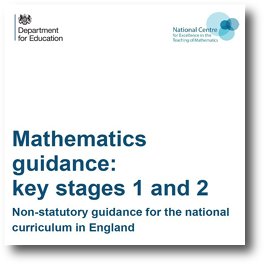By giving teachers Ready-to-progress criteria (RtPs), the NCETM aims to identify the core concepts in the national curriculum and make progression a little clearer when identifying the expectations for mastery of particular aspects of knowledge and understanding. It also gives guidance on important connections between mathematical topics.
To help Broadbent Maths users I have produced a set of documents matching the RtPs to maths topics and unit plans for each year. Once logged in, they can be found in the Progression menu.
Planning and teaching with the RtPs
1. These RtPs were intended to slim down the curriculum to allow teachers to plan for core concepts and support pupils' mastery of these. It means there are gaps and areas missing from the curriculum. As these are non-statutory you don't need to follow the guidance, but it may be a good way to guide you in to simplifying the planning by reducing the content.
2. They are also aimed as goals for the end of a year, so the 79 PowerPoints and questions for each RtP from the NCETM will be very useful for reviewing the progress of pupils or giving further practice. I would perhaps plan to use these towards the end of a topic or if you feel a group needs further reinforcement towards mastery.
3. Make sure you continue planning for progression (using unit plans for example) and don’t just plan to meet the RtPs. However, it would be a good idea to look at the RtPs for the approach, language, connections, knowledge and understanding that is included in the guidance, so that you can include this within your planned units. Not every unit, but those that are relevant. You can then make use of the NCETM PowerPoints to help your teaching and the children's understanding.
4. The Broadbent Maths small steps of progression are much smaller steps towards each criteria. For example, 1NPV-1 ‘Count within 100, forwards and backwards, starting with any number' is reached after more than 25 'counting' steps in the 'EYFS' and 'Number' small steps of progression. So planning as usual is needed (or reduced content planning) then these RtPs can be used to review progress at the end of a topic, term or year.
5. It may be an idea to focus on number and calculation in your planning. Again, the RtPs will help identify the strands to focus on and track progress. I wrote an article on tracking progress while focussing on number last year and it is still relevant.
6. Use the RtPs to support and sit within your planning, not to make it too complex. Keep encouraging the teachers to be positive and confident in their planning using the approach you feel comfortable with as a staff. As I said in a previous article:
‘... this relies on you having a really good feel for the small steps of progression in each maths topic and an understanding of the best models and images to help primary children make sense of the mathematics. You also need a bank of practical, reasoning and problem-solving activities that give the children a chance to explore and give you a chance to assess.'



